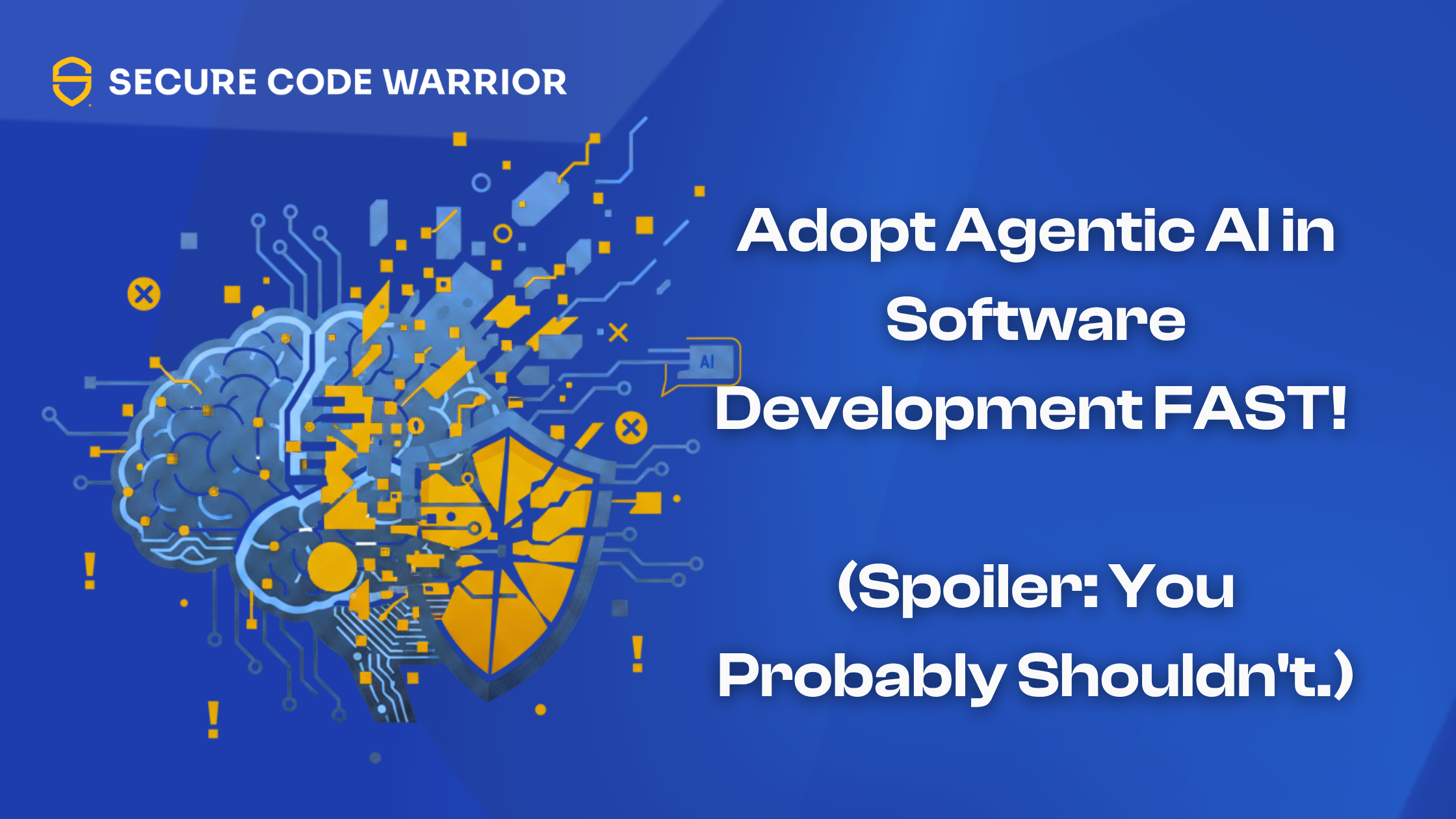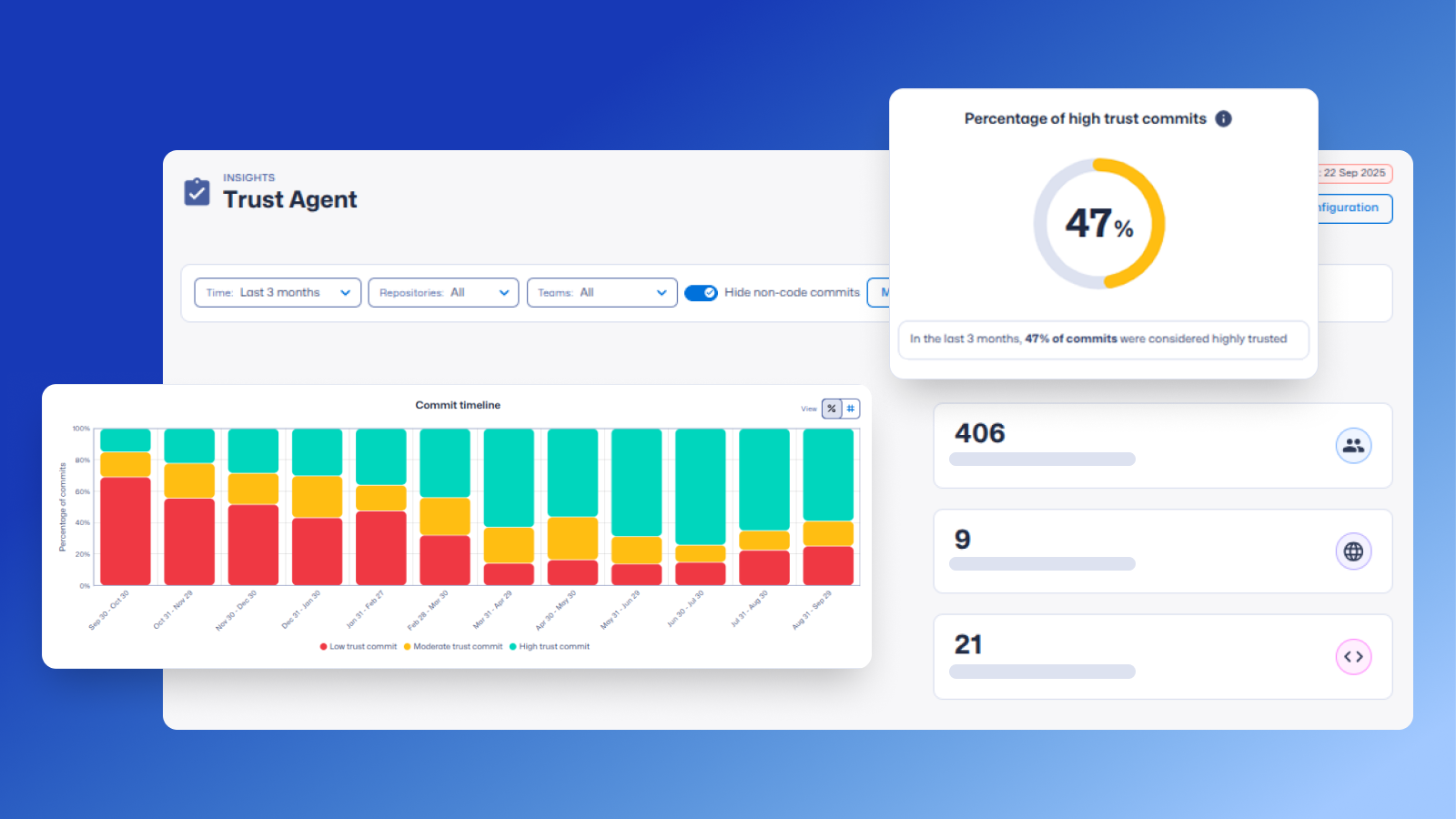
Cybersecurity Risk Assessment: Definition and Steps
As cyber threats become increasingly sophisticated, businesses of every size must proactively assess and address their cybersecurity risks to protect sensitive data, maintain customer trust, and comply with legal requirements. A comprehensive understanding of potential vulnerabilities enables organizations to take targeted actions and allocate resources effectively, minimizing the chances of a damaging incident.
Assessing cybersecurity risks is a complex task, given the variety of threats your company may face, from malware, to insecure coding practices, to data breaches. By conducting regular cybersecurity risk assessments, your business can stay ahead of evolving threats and ensure it has the necessary measures in place to safeguard its assets. Let’s take a look at how your company can conduct an effective risk assessment to identify weaknesses and build a resilient security framework.
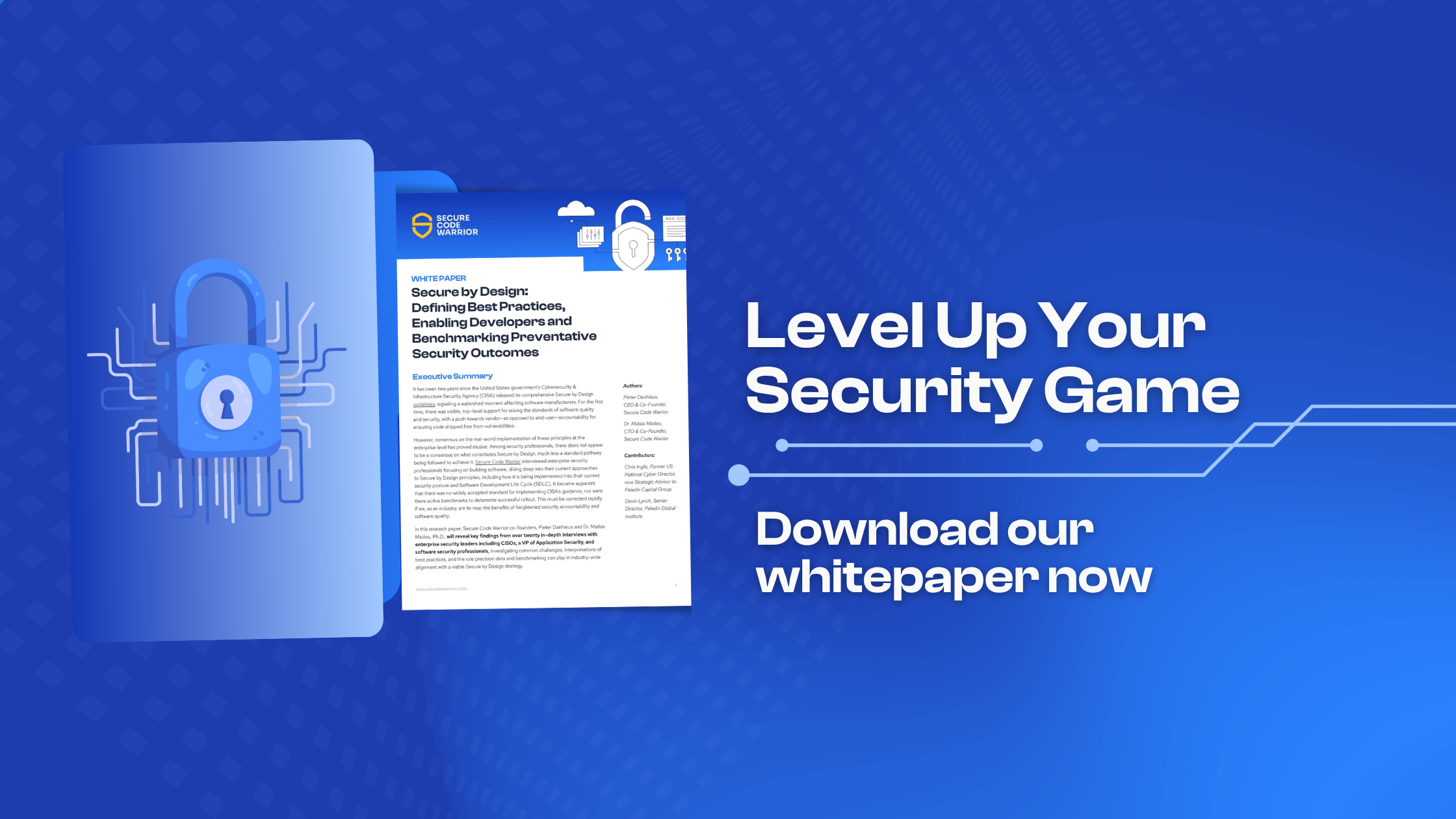
What is a cybersecurity risk assessment?
A cybersecurity risk assessment is the process of identifying, evaluating, and prioritizing risks to your organization's information technology systems. The goal of a cybersecurity risk assessment is to detect current vulnerabilities and predict future threats, like injection attacks or cross-site scripting (XSS), so your company can understand the potential impact of those vulnerabilities and how to best mitigate them. Many of these issues can be addressed before they cause serious damage by implementing secure coding practices from the start of the software development lifecycle (SDLC).
The cybersecurity landscape is always changing, with new threats emerging and existing ones evolving. That’s why organizations should regularly conduct risk assessments, rather than treating them as a one-and-done exercise.
Using a structured framework, such as the NIST (National Institute of Standards and Technology) or ISO/IEC 27001 standards, can improve and streamline cybersecurity risk assessments by providing a well-defined, proven approach. These frameworks offer guidelines on best practices for risk identification, evaluation, and mitigation. While your organization may use these frameworks as a baseline, in many cases, it’s best to develop a customized methodology tailored to your specific needs. This ensures that the assessment addresses risks specific to your industry or operational environment.
The importance and benefits of cybersecurity risk assessments
Cyberattacks pose significant organizational risks in terms of both financial loss and reputational damage. For instance, a ransomware attack can cost companies millions in downtime and recovery costs, while a data breach may lead to lost customer trust and regulatory fines. The longer a vulnerability remains unaddressed, the higher the likelihood of an attack and the greater the associated costs.
Conducting regular cybersecurity risk assessments also allows your company to gain a deep, accurate understanding of its security vulnerabilities on an ongoing basis. Your business can then make more informed decisions on how to invest its limited cybersecurity resources by prioritizing vulnerabilities based on the severity and likelihood of an attack.
How to perform a cybersecurity risk assessment in 7 steps
Performing a cybersecurity risk assessment involves identifying, analyzing, and addressing the risks your organization faces. While there are steps that apply to most risk assessments, it’s important to tailor the process to your company’s specific needs, size, industry, and security requirements. Here is a breakdown of the critical steps for your company to follow.
1. Define objectives and scope
First, you need to clearly define the objectives and scope of the risk assessment. This means understanding what the assessment aims to achieve and the areas of your business it will cover. This step is critical because it sets the foundation for the entire assessment. A well-defined scope prevents the assessment from becoming overwhelming, ensuring that time and resources are spent evaluating what matters most.
Involving team members from relevant departments during this phase helps ensure that no essential area is overlooked. Engage key stakeholders across departments like IT, legal, operations, and compliance to outline the areas of greatest concern, and collaboratively set clear goals for the assessment. Then establish a timeline and budget for the project to avoid scope creep and maintain focus. And ensure that you don’t neglect training on secure coding practices to address the risk of vulnerabilities introduced early on in the development process.
2. Prioritize IT assets
After defining the scope, it’s time to identify and prioritize your organization’s IT assets. By determining which assets are most critical to your business operations, you can allocate resources more effectively during the risk mitigation process. This is especially important for smaller organizations that may not have the capability to address every potential risk in a timely fashion. Prioritizing IT assets ensures that you focus on the areas that, if compromised, would have the most significant impact on your organization’s functionality or reputation.
Begin by collaborating with IT and business units to identify and categorize assets based on their importance to the organization. Map out key systems, databases, intellectual property, and any other resources that are essential to your organization’s operation. This should include determining the confidentiality, integrity, and availability needs of each asset. Once the assets are prioritized, you can begin evaluating the risks and vulnerabilities associated with them, ensuring that high-value assets are given the attention they deserve.
3. Identify threats and vulnerabilities
The next step is to identify potential threats and vulnerabilities that could impact your prioritized IT assets. Threats refer to any external or internal factors that could exploit weaknesses in your system, like cybercriminals, malware, or natural disasters. Vulnerabilities are weaknesses in your system that could be exploited by these threats, such as insufficient encryption, misconfigured systems, or insecure software development practices.
This is where your company begins to understand the specific risks it faces and the gaps in its current security posture. For example, if your organization uses outdated software or weak password policies, these could become points of entry for cybercriminals. A thorough understanding of your system’s vulnerabilities and attack surface gives you a roadmap for implementing fixes. It also sets the stage for the next steps in the risk assessment process, which involves assessing the impact and likelihood of these threats.
As part of this process, conduct a vulnerability scan using tools that can detect weaknesses in your network and systems. Supplement this technical analysis with a review of past incidents, common attack vectors for your industry, and emerging cyber threats. Engage key IT and security staff in identifying areas of concern and updating the list of known vulnerabilities. You should also carefully assess any vulnerabilities in your software development practices, as part of creating a Secure Software Development Life Cycle (SSDLC) framework.
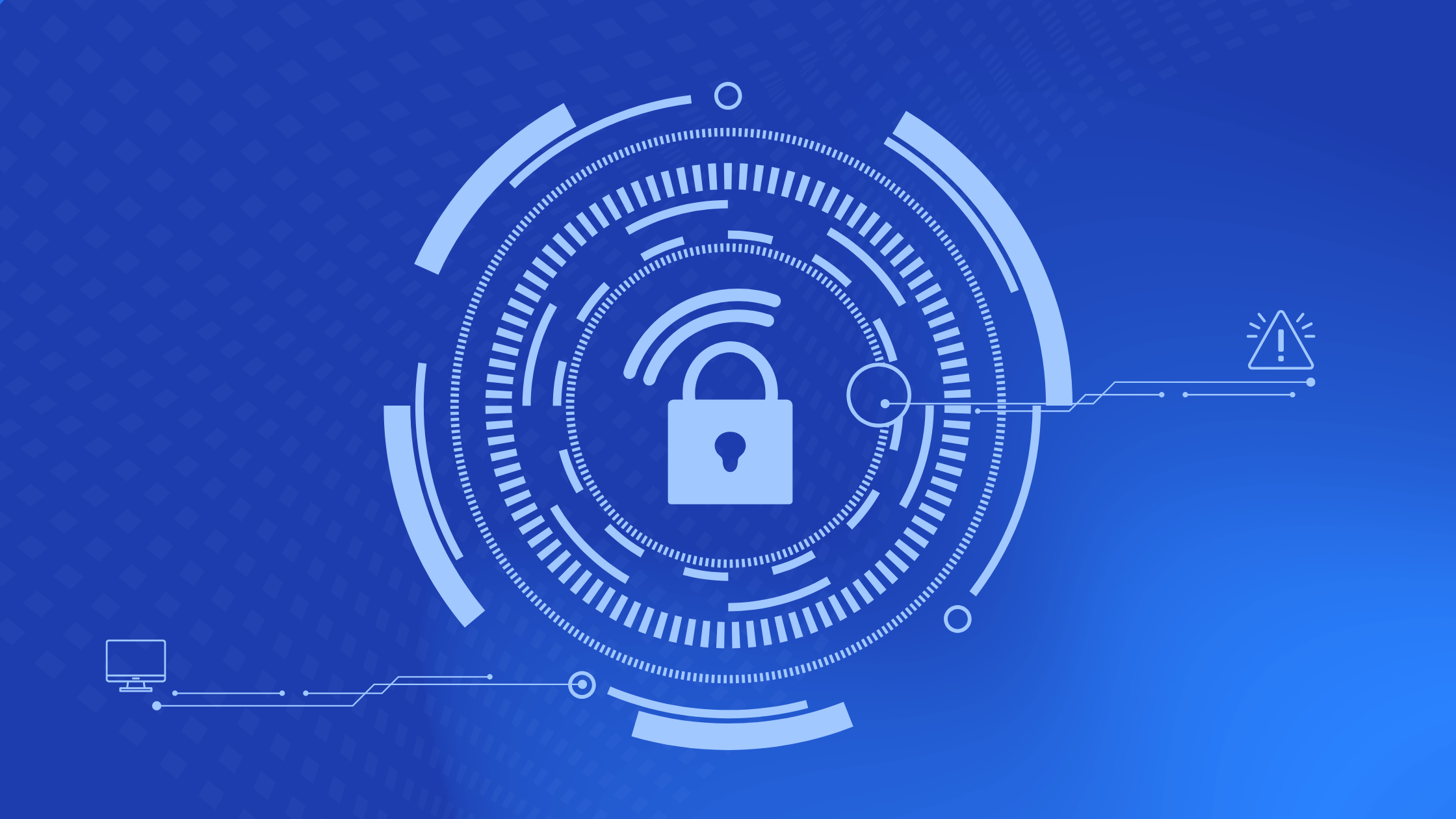
4. Determine risk levels and prioritize risks
Once threats and vulnerabilities are identified, your organization should determine the risk levels associated with each. This step involves evaluating both the likelihood of a threat actor exploiting a vulnerability and the potential impact on your organization. Risk levels can be categorized as low, medium, or high, based on factors such as the severity of the impact, the ease with which an attacker can exploit the vulnerability, and the asset's exposure.
Determining risk levels allows your organization to understand which threats pose the greatest danger to its operations and reputation. A vulnerability in a public-facing website might be classified as high risk because an attack could compromise sensitive customer data and lead to significant damage to your brand. On the other hand, an internal risk, such as a misconfigured server with limited access, might be categorized as having a lower risk.
Your company can use a risk matrix to calculate the probability and potential impact of each identified risk. Engage your cybersecurity team to define the factors that should influence risk scoring, such as the importance of the asset, ease of exploitation, and the business impact of a successful attack. You should also involve senior management in assessing risk levels to ensure that the organization’s business objectives are aligned with its security priorities.
Once you’ve determined risk levels, prioritize those risks based on their severity and impact. Not all risks can or need to be mitigated immediately, and some may require long-term solutions or strategic planning. By addressing high-priority risks first, your business can reduce its exposure to catastrophic events, such as data breaches or system outages.
5. Address risks with security measures
The next step is to implement appropriate security measures to mitigate the risks you’ve prioritized. The goal is to reduce the likelihood of a security breach occurring and minimize the potential damage if an attack does happen. Start by applying high-priority security measures for your most critical assets. Involve your IT and security teams to determine the most suitable solutions and integrate them into your company’s overall cybersecurity strategy.
Each security solution should be tailored to the specific threat or vulnerability it addresses. This could involve applying technical solutions such as firewalls, intrusion detection systems, encryption, and multi-factor authentication (MFA), as well as new policies and developer training in areas like secure coding.
6. Implement secure coding practices
Developer risk management plays a pivotal role in addressing cybersecurity risks. Developers must be trained to recognize and mitigate security threats at each stage of the SDLC, from requirements gathering to testing and deployment. Integrating security early in the SDLC helps in identifying vulnerabilities before they become critical issues in production. Secure coding also better equips your developers to better assess AI-generated code for potential security flaws before it goes into production, so they can maintain both efficiency and safety.
Organizations must train developers in secure coding practices and implement continuous integration/continuous delivery (CI/CD) pipelines that automatically detect and address vulnerabilities during development. These secure coding practices, like input validation, secure data storage, and secure session management, can greatly reduce the risk of common development-related vulnerabilities, including SQL injection, cross-site scripting (XSS), and buffer overflows.
7. Conduct continuous monitoring and document risks
Cybersecurity risk management should be a continuous process to keep your business resilient against evolving threats. Implement practices like conducting risk assessments on a set cadence, setting up real-time monitoring tools, conducting regular vulnerability scans, and reviewing access logs to detect any abnormal activities. Review and update your risk assessment process regularly, with input from relevant stakeholders across your organization.
Finally, to ensure future assessments are built on what’s come before, always document the risks you identify and the measures taken to mitigate them. An easily-accessible single source of truth that tracks each risk, its status, and related actions taken can serve as an invaluable aid to your ongoing cybersecurity efforts.
Carry out and act on cybersecurity risk assessments
Cybersecurity risks, if left unaddressed, can lead to devastating consequences, including costly data breaches, regulatory penalties, legal fees, and lasting damage to your company’s reputation. To ensure your business is adequately protected, you should conduct and act on cybersecurity risk assessments. One of the best ways to achieve this is by incorporating secure coding practices throughout the SDLC to drastically reduce vulnerabilities.
Secure Code Warrior’s learning platform equips your developers with the skills and knowledge needed to address security flaws before software reaches production. Upskilled development teams that take advantage of Secure Code Warrior’s platform can reduce vulnerabilities by 53%, leading to cost savings of up to $14 million. With 2x to 3x gains in risk reduction, it’s no surprise that developers keep coming back for more learning, with 92% of them eager for additional training.
If you’re ready to reduce your cybersecurity risk profile and ensure your software is built securely from the ground up, schedule a demo of Secure Code Warrior’s platform today.
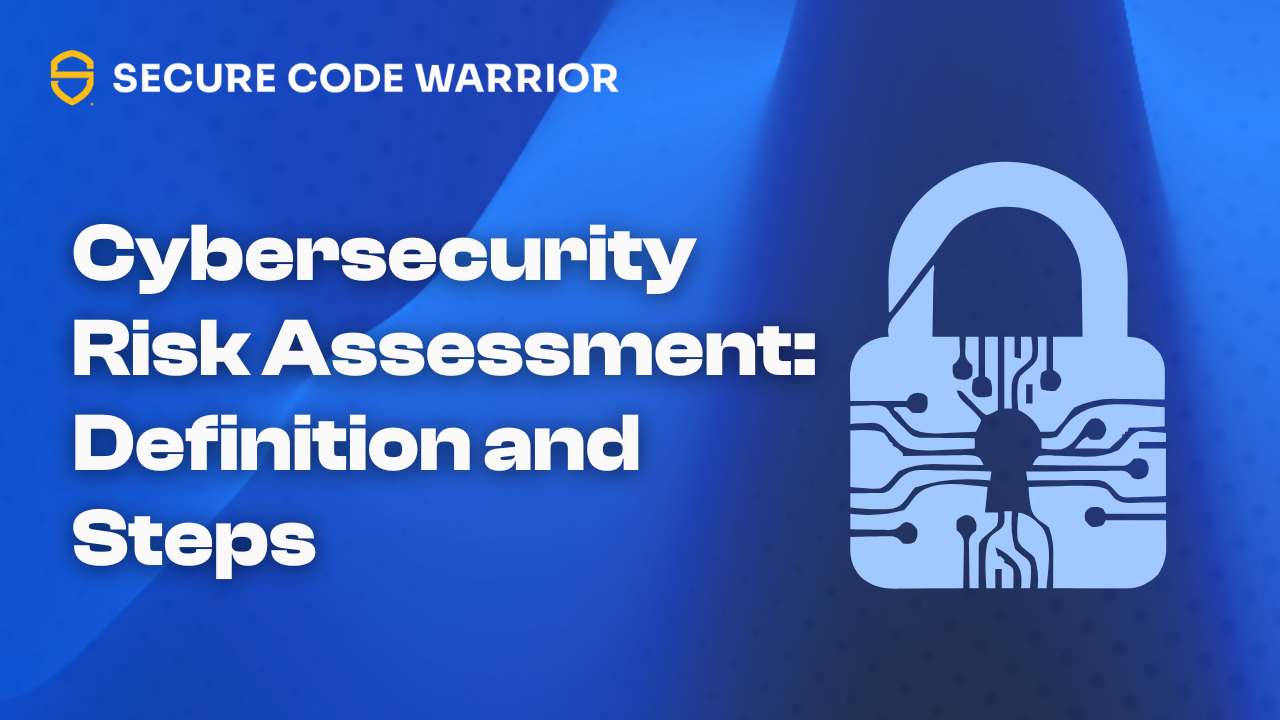

Address cybersecurity risks at your organization with this actionable guide to carrying out effective cybersecurity risk assessments.
Secure Code Warrior makes secure coding a positive and engaging experience for developers as they increase their skills. We guide each coder along their own preferred learning pathway, so that security-skilled developers become the everyday superheroes of our connected world.

Secure Code Warrior is here for your organization to help you secure code across the entire software development lifecycle and create a culture in which cybersecurity is top of mind. Whether you’re an AppSec Manager, Developer, CISO, or anyone involved in security, we can help your organization reduce risks associated with insecure code.
Book a demoSecure Code Warrior makes secure coding a positive and engaging experience for developers as they increase their skills. We guide each coder along their own preferred learning pathway, so that security-skilled developers become the everyday superheroes of our connected world.
This article was written by Secure Code Warrior's team of industry experts, committed to empowering developers with the knowledge and skills to build secure software from the start. Drawing on deep expertise in secure coding practices, industry trends, and real-world insights.


As cyber threats become increasingly sophisticated, businesses of every size must proactively assess and address their cybersecurity risks to protect sensitive data, maintain customer trust, and comply with legal requirements. A comprehensive understanding of potential vulnerabilities enables organizations to take targeted actions and allocate resources effectively, minimizing the chances of a damaging incident.
Assessing cybersecurity risks is a complex task, given the variety of threats your company may face, from malware, to insecure coding practices, to data breaches. By conducting regular cybersecurity risk assessments, your business can stay ahead of evolving threats and ensure it has the necessary measures in place to safeguard its assets. Let’s take a look at how your company can conduct an effective risk assessment to identify weaknesses and build a resilient security framework.

What is a cybersecurity risk assessment?
A cybersecurity risk assessment is the process of identifying, evaluating, and prioritizing risks to your organization's information technology systems. The goal of a cybersecurity risk assessment is to detect current vulnerabilities and predict future threats, like injection attacks or cross-site scripting (XSS), so your company can understand the potential impact of those vulnerabilities and how to best mitigate them. Many of these issues can be addressed before they cause serious damage by implementing secure coding practices from the start of the software development lifecycle (SDLC).
The cybersecurity landscape is always changing, with new threats emerging and existing ones evolving. That’s why organizations should regularly conduct risk assessments, rather than treating them as a one-and-done exercise.
Using a structured framework, such as the NIST (National Institute of Standards and Technology) or ISO/IEC 27001 standards, can improve and streamline cybersecurity risk assessments by providing a well-defined, proven approach. These frameworks offer guidelines on best practices for risk identification, evaluation, and mitigation. While your organization may use these frameworks as a baseline, in many cases, it’s best to develop a customized methodology tailored to your specific needs. This ensures that the assessment addresses risks specific to your industry or operational environment.
The importance and benefits of cybersecurity risk assessments
Cyberattacks pose significant organizational risks in terms of both financial loss and reputational damage. For instance, a ransomware attack can cost companies millions in downtime and recovery costs, while a data breach may lead to lost customer trust and regulatory fines. The longer a vulnerability remains unaddressed, the higher the likelihood of an attack and the greater the associated costs.
Conducting regular cybersecurity risk assessments also allows your company to gain a deep, accurate understanding of its security vulnerabilities on an ongoing basis. Your business can then make more informed decisions on how to invest its limited cybersecurity resources by prioritizing vulnerabilities based on the severity and likelihood of an attack.
How to perform a cybersecurity risk assessment in 7 steps
Performing a cybersecurity risk assessment involves identifying, analyzing, and addressing the risks your organization faces. While there are steps that apply to most risk assessments, it’s important to tailor the process to your company’s specific needs, size, industry, and security requirements. Here is a breakdown of the critical steps for your company to follow.
1. Define objectives and scope
First, you need to clearly define the objectives and scope of the risk assessment. This means understanding what the assessment aims to achieve and the areas of your business it will cover. This step is critical because it sets the foundation for the entire assessment. A well-defined scope prevents the assessment from becoming overwhelming, ensuring that time and resources are spent evaluating what matters most.
Involving team members from relevant departments during this phase helps ensure that no essential area is overlooked. Engage key stakeholders across departments like IT, legal, operations, and compliance to outline the areas of greatest concern, and collaboratively set clear goals for the assessment. Then establish a timeline and budget for the project to avoid scope creep and maintain focus. And ensure that you don’t neglect training on secure coding practices to address the risk of vulnerabilities introduced early on in the development process.
2. Prioritize IT assets
After defining the scope, it’s time to identify and prioritize your organization’s IT assets. By determining which assets are most critical to your business operations, you can allocate resources more effectively during the risk mitigation process. This is especially important for smaller organizations that may not have the capability to address every potential risk in a timely fashion. Prioritizing IT assets ensures that you focus on the areas that, if compromised, would have the most significant impact on your organization’s functionality or reputation.
Begin by collaborating with IT and business units to identify and categorize assets based on their importance to the organization. Map out key systems, databases, intellectual property, and any other resources that are essential to your organization’s operation. This should include determining the confidentiality, integrity, and availability needs of each asset. Once the assets are prioritized, you can begin evaluating the risks and vulnerabilities associated with them, ensuring that high-value assets are given the attention they deserve.
3. Identify threats and vulnerabilities
The next step is to identify potential threats and vulnerabilities that could impact your prioritized IT assets. Threats refer to any external or internal factors that could exploit weaknesses in your system, like cybercriminals, malware, or natural disasters. Vulnerabilities are weaknesses in your system that could be exploited by these threats, such as insufficient encryption, misconfigured systems, or insecure software development practices.
This is where your company begins to understand the specific risks it faces and the gaps in its current security posture. For example, if your organization uses outdated software or weak password policies, these could become points of entry for cybercriminals. A thorough understanding of your system’s vulnerabilities and attack surface gives you a roadmap for implementing fixes. It also sets the stage for the next steps in the risk assessment process, which involves assessing the impact and likelihood of these threats.
As part of this process, conduct a vulnerability scan using tools that can detect weaknesses in your network and systems. Supplement this technical analysis with a review of past incidents, common attack vectors for your industry, and emerging cyber threats. Engage key IT and security staff in identifying areas of concern and updating the list of known vulnerabilities. You should also carefully assess any vulnerabilities in your software development practices, as part of creating a Secure Software Development Life Cycle (SSDLC) framework.

4. Determine risk levels and prioritize risks
Once threats and vulnerabilities are identified, your organization should determine the risk levels associated with each. This step involves evaluating both the likelihood of a threat actor exploiting a vulnerability and the potential impact on your organization. Risk levels can be categorized as low, medium, or high, based on factors such as the severity of the impact, the ease with which an attacker can exploit the vulnerability, and the asset's exposure.
Determining risk levels allows your organization to understand which threats pose the greatest danger to its operations and reputation. A vulnerability in a public-facing website might be classified as high risk because an attack could compromise sensitive customer data and lead to significant damage to your brand. On the other hand, an internal risk, such as a misconfigured server with limited access, might be categorized as having a lower risk.
Your company can use a risk matrix to calculate the probability and potential impact of each identified risk. Engage your cybersecurity team to define the factors that should influence risk scoring, such as the importance of the asset, ease of exploitation, and the business impact of a successful attack. You should also involve senior management in assessing risk levels to ensure that the organization’s business objectives are aligned with its security priorities.
Once you’ve determined risk levels, prioritize those risks based on their severity and impact. Not all risks can or need to be mitigated immediately, and some may require long-term solutions or strategic planning. By addressing high-priority risks first, your business can reduce its exposure to catastrophic events, such as data breaches or system outages.
5. Address risks with security measures
The next step is to implement appropriate security measures to mitigate the risks you’ve prioritized. The goal is to reduce the likelihood of a security breach occurring and minimize the potential damage if an attack does happen. Start by applying high-priority security measures for your most critical assets. Involve your IT and security teams to determine the most suitable solutions and integrate them into your company’s overall cybersecurity strategy.
Each security solution should be tailored to the specific threat or vulnerability it addresses. This could involve applying technical solutions such as firewalls, intrusion detection systems, encryption, and multi-factor authentication (MFA), as well as new policies and developer training in areas like secure coding.
6. Implement secure coding practices
Developer risk management plays a pivotal role in addressing cybersecurity risks. Developers must be trained to recognize and mitigate security threats at each stage of the SDLC, from requirements gathering to testing and deployment. Integrating security early in the SDLC helps in identifying vulnerabilities before they become critical issues in production. Secure coding also better equips your developers to better assess AI-generated code for potential security flaws before it goes into production, so they can maintain both efficiency and safety.
Organizations must train developers in secure coding practices and implement continuous integration/continuous delivery (CI/CD) pipelines that automatically detect and address vulnerabilities during development. These secure coding practices, like input validation, secure data storage, and secure session management, can greatly reduce the risk of common development-related vulnerabilities, including SQL injection, cross-site scripting (XSS), and buffer overflows.
7. Conduct continuous monitoring and document risks
Cybersecurity risk management should be a continuous process to keep your business resilient against evolving threats. Implement practices like conducting risk assessments on a set cadence, setting up real-time monitoring tools, conducting regular vulnerability scans, and reviewing access logs to detect any abnormal activities. Review and update your risk assessment process regularly, with input from relevant stakeholders across your organization.
Finally, to ensure future assessments are built on what’s come before, always document the risks you identify and the measures taken to mitigate them. An easily-accessible single source of truth that tracks each risk, its status, and related actions taken can serve as an invaluable aid to your ongoing cybersecurity efforts.
Carry out and act on cybersecurity risk assessments
Cybersecurity risks, if left unaddressed, can lead to devastating consequences, including costly data breaches, regulatory penalties, legal fees, and lasting damage to your company’s reputation. To ensure your business is adequately protected, you should conduct and act on cybersecurity risk assessments. One of the best ways to achieve this is by incorporating secure coding practices throughout the SDLC to drastically reduce vulnerabilities.
Secure Code Warrior’s learning platform equips your developers with the skills and knowledge needed to address security flaws before software reaches production. Upskilled development teams that take advantage of Secure Code Warrior’s platform can reduce vulnerabilities by 53%, leading to cost savings of up to $14 million. With 2x to 3x gains in risk reduction, it’s no surprise that developers keep coming back for more learning, with 92% of them eager for additional training.
If you’re ready to reduce your cybersecurity risk profile and ensure your software is built securely from the ground up, schedule a demo of Secure Code Warrior’s platform today.

As cyber threats become increasingly sophisticated, businesses of every size must proactively assess and address their cybersecurity risks to protect sensitive data, maintain customer trust, and comply with legal requirements. A comprehensive understanding of potential vulnerabilities enables organizations to take targeted actions and allocate resources effectively, minimizing the chances of a damaging incident.
Assessing cybersecurity risks is a complex task, given the variety of threats your company may face, from malware, to insecure coding practices, to data breaches. By conducting regular cybersecurity risk assessments, your business can stay ahead of evolving threats and ensure it has the necessary measures in place to safeguard its assets. Let’s take a look at how your company can conduct an effective risk assessment to identify weaknesses and build a resilient security framework.

What is a cybersecurity risk assessment?
A cybersecurity risk assessment is the process of identifying, evaluating, and prioritizing risks to your organization's information technology systems. The goal of a cybersecurity risk assessment is to detect current vulnerabilities and predict future threats, like injection attacks or cross-site scripting (XSS), so your company can understand the potential impact of those vulnerabilities and how to best mitigate them. Many of these issues can be addressed before they cause serious damage by implementing secure coding practices from the start of the software development lifecycle (SDLC).
The cybersecurity landscape is always changing, with new threats emerging and existing ones evolving. That’s why organizations should regularly conduct risk assessments, rather than treating them as a one-and-done exercise.
Using a structured framework, such as the NIST (National Institute of Standards and Technology) or ISO/IEC 27001 standards, can improve and streamline cybersecurity risk assessments by providing a well-defined, proven approach. These frameworks offer guidelines on best practices for risk identification, evaluation, and mitigation. While your organization may use these frameworks as a baseline, in many cases, it’s best to develop a customized methodology tailored to your specific needs. This ensures that the assessment addresses risks specific to your industry or operational environment.
The importance and benefits of cybersecurity risk assessments
Cyberattacks pose significant organizational risks in terms of both financial loss and reputational damage. For instance, a ransomware attack can cost companies millions in downtime and recovery costs, while a data breach may lead to lost customer trust and regulatory fines. The longer a vulnerability remains unaddressed, the higher the likelihood of an attack and the greater the associated costs.
Conducting regular cybersecurity risk assessments also allows your company to gain a deep, accurate understanding of its security vulnerabilities on an ongoing basis. Your business can then make more informed decisions on how to invest its limited cybersecurity resources by prioritizing vulnerabilities based on the severity and likelihood of an attack.
How to perform a cybersecurity risk assessment in 7 steps
Performing a cybersecurity risk assessment involves identifying, analyzing, and addressing the risks your organization faces. While there are steps that apply to most risk assessments, it’s important to tailor the process to your company’s specific needs, size, industry, and security requirements. Here is a breakdown of the critical steps for your company to follow.
1. Define objectives and scope
First, you need to clearly define the objectives and scope of the risk assessment. This means understanding what the assessment aims to achieve and the areas of your business it will cover. This step is critical because it sets the foundation for the entire assessment. A well-defined scope prevents the assessment from becoming overwhelming, ensuring that time and resources are spent evaluating what matters most.
Involving team members from relevant departments during this phase helps ensure that no essential area is overlooked. Engage key stakeholders across departments like IT, legal, operations, and compliance to outline the areas of greatest concern, and collaboratively set clear goals for the assessment. Then establish a timeline and budget for the project to avoid scope creep and maintain focus. And ensure that you don’t neglect training on secure coding practices to address the risk of vulnerabilities introduced early on in the development process.
2. Prioritize IT assets
After defining the scope, it’s time to identify and prioritize your organization’s IT assets. By determining which assets are most critical to your business operations, you can allocate resources more effectively during the risk mitigation process. This is especially important for smaller organizations that may not have the capability to address every potential risk in a timely fashion. Prioritizing IT assets ensures that you focus on the areas that, if compromised, would have the most significant impact on your organization’s functionality or reputation.
Begin by collaborating with IT and business units to identify and categorize assets based on their importance to the organization. Map out key systems, databases, intellectual property, and any other resources that are essential to your organization’s operation. This should include determining the confidentiality, integrity, and availability needs of each asset. Once the assets are prioritized, you can begin evaluating the risks and vulnerabilities associated with them, ensuring that high-value assets are given the attention they deserve.
3. Identify threats and vulnerabilities
The next step is to identify potential threats and vulnerabilities that could impact your prioritized IT assets. Threats refer to any external or internal factors that could exploit weaknesses in your system, like cybercriminals, malware, or natural disasters. Vulnerabilities are weaknesses in your system that could be exploited by these threats, such as insufficient encryption, misconfigured systems, or insecure software development practices.
This is where your company begins to understand the specific risks it faces and the gaps in its current security posture. For example, if your organization uses outdated software or weak password policies, these could become points of entry for cybercriminals. A thorough understanding of your system’s vulnerabilities and attack surface gives you a roadmap for implementing fixes. It also sets the stage for the next steps in the risk assessment process, which involves assessing the impact and likelihood of these threats.
As part of this process, conduct a vulnerability scan using tools that can detect weaknesses in your network and systems. Supplement this technical analysis with a review of past incidents, common attack vectors for your industry, and emerging cyber threats. Engage key IT and security staff in identifying areas of concern and updating the list of known vulnerabilities. You should also carefully assess any vulnerabilities in your software development practices, as part of creating a Secure Software Development Life Cycle (SSDLC) framework.

4. Determine risk levels and prioritize risks
Once threats and vulnerabilities are identified, your organization should determine the risk levels associated with each. This step involves evaluating both the likelihood of a threat actor exploiting a vulnerability and the potential impact on your organization. Risk levels can be categorized as low, medium, or high, based on factors such as the severity of the impact, the ease with which an attacker can exploit the vulnerability, and the asset's exposure.
Determining risk levels allows your organization to understand which threats pose the greatest danger to its operations and reputation. A vulnerability in a public-facing website might be classified as high risk because an attack could compromise sensitive customer data and lead to significant damage to your brand. On the other hand, an internal risk, such as a misconfigured server with limited access, might be categorized as having a lower risk.
Your company can use a risk matrix to calculate the probability and potential impact of each identified risk. Engage your cybersecurity team to define the factors that should influence risk scoring, such as the importance of the asset, ease of exploitation, and the business impact of a successful attack. You should also involve senior management in assessing risk levels to ensure that the organization’s business objectives are aligned with its security priorities.
Once you’ve determined risk levels, prioritize those risks based on their severity and impact. Not all risks can or need to be mitigated immediately, and some may require long-term solutions or strategic planning. By addressing high-priority risks first, your business can reduce its exposure to catastrophic events, such as data breaches or system outages.
5. Address risks with security measures
The next step is to implement appropriate security measures to mitigate the risks you’ve prioritized. The goal is to reduce the likelihood of a security breach occurring and minimize the potential damage if an attack does happen. Start by applying high-priority security measures for your most critical assets. Involve your IT and security teams to determine the most suitable solutions and integrate them into your company’s overall cybersecurity strategy.
Each security solution should be tailored to the specific threat or vulnerability it addresses. This could involve applying technical solutions such as firewalls, intrusion detection systems, encryption, and multi-factor authentication (MFA), as well as new policies and developer training in areas like secure coding.
6. Implement secure coding practices
Developer risk management plays a pivotal role in addressing cybersecurity risks. Developers must be trained to recognize and mitigate security threats at each stage of the SDLC, from requirements gathering to testing and deployment. Integrating security early in the SDLC helps in identifying vulnerabilities before they become critical issues in production. Secure coding also better equips your developers to better assess AI-generated code for potential security flaws before it goes into production, so they can maintain both efficiency and safety.
Organizations must train developers in secure coding practices and implement continuous integration/continuous delivery (CI/CD) pipelines that automatically detect and address vulnerabilities during development. These secure coding practices, like input validation, secure data storage, and secure session management, can greatly reduce the risk of common development-related vulnerabilities, including SQL injection, cross-site scripting (XSS), and buffer overflows.
7. Conduct continuous monitoring and document risks
Cybersecurity risk management should be a continuous process to keep your business resilient against evolving threats. Implement practices like conducting risk assessments on a set cadence, setting up real-time monitoring tools, conducting regular vulnerability scans, and reviewing access logs to detect any abnormal activities. Review and update your risk assessment process regularly, with input from relevant stakeholders across your organization.
Finally, to ensure future assessments are built on what’s come before, always document the risks you identify and the measures taken to mitigate them. An easily-accessible single source of truth that tracks each risk, its status, and related actions taken can serve as an invaluable aid to your ongoing cybersecurity efforts.
Carry out and act on cybersecurity risk assessments
Cybersecurity risks, if left unaddressed, can lead to devastating consequences, including costly data breaches, regulatory penalties, legal fees, and lasting damage to your company’s reputation. To ensure your business is adequately protected, you should conduct and act on cybersecurity risk assessments. One of the best ways to achieve this is by incorporating secure coding practices throughout the SDLC to drastically reduce vulnerabilities.
Secure Code Warrior’s learning platform equips your developers with the skills and knowledge needed to address security flaws before software reaches production. Upskilled development teams that take advantage of Secure Code Warrior’s platform can reduce vulnerabilities by 53%, leading to cost savings of up to $14 million. With 2x to 3x gains in risk reduction, it’s no surprise that developers keep coming back for more learning, with 92% of them eager for additional training.
If you’re ready to reduce your cybersecurity risk profile and ensure your software is built securely from the ground up, schedule a demo of Secure Code Warrior’s platform today.

Click on the link below and download the PDF of this resource.
Secure Code Warrior is here for your organization to help you secure code across the entire software development lifecycle and create a culture in which cybersecurity is top of mind. Whether you’re an AppSec Manager, Developer, CISO, or anyone involved in security, we can help your organization reduce risks associated with insecure code.
View reportBook a demoSecure Code Warrior makes secure coding a positive and engaging experience for developers as they increase their skills. We guide each coder along their own preferred learning pathway, so that security-skilled developers become the everyday superheroes of our connected world.
This article was written by Secure Code Warrior's team of industry experts, committed to empowering developers with the knowledge and skills to build secure software from the start. Drawing on deep expertise in secure coding practices, industry trends, and real-world insights.
As cyber threats become increasingly sophisticated, businesses of every size must proactively assess and address their cybersecurity risks to protect sensitive data, maintain customer trust, and comply with legal requirements. A comprehensive understanding of potential vulnerabilities enables organizations to take targeted actions and allocate resources effectively, minimizing the chances of a damaging incident.
Assessing cybersecurity risks is a complex task, given the variety of threats your company may face, from malware, to insecure coding practices, to data breaches. By conducting regular cybersecurity risk assessments, your business can stay ahead of evolving threats and ensure it has the necessary measures in place to safeguard its assets. Let’s take a look at how your company can conduct an effective risk assessment to identify weaknesses and build a resilient security framework.

What is a cybersecurity risk assessment?
A cybersecurity risk assessment is the process of identifying, evaluating, and prioritizing risks to your organization's information technology systems. The goal of a cybersecurity risk assessment is to detect current vulnerabilities and predict future threats, like injection attacks or cross-site scripting (XSS), so your company can understand the potential impact of those vulnerabilities and how to best mitigate them. Many of these issues can be addressed before they cause serious damage by implementing secure coding practices from the start of the software development lifecycle (SDLC).
The cybersecurity landscape is always changing, with new threats emerging and existing ones evolving. That’s why organizations should regularly conduct risk assessments, rather than treating them as a one-and-done exercise.
Using a structured framework, such as the NIST (National Institute of Standards and Technology) or ISO/IEC 27001 standards, can improve and streamline cybersecurity risk assessments by providing a well-defined, proven approach. These frameworks offer guidelines on best practices for risk identification, evaluation, and mitigation. While your organization may use these frameworks as a baseline, in many cases, it’s best to develop a customized methodology tailored to your specific needs. This ensures that the assessment addresses risks specific to your industry or operational environment.
The importance and benefits of cybersecurity risk assessments
Cyberattacks pose significant organizational risks in terms of both financial loss and reputational damage. For instance, a ransomware attack can cost companies millions in downtime and recovery costs, while a data breach may lead to lost customer trust and regulatory fines. The longer a vulnerability remains unaddressed, the higher the likelihood of an attack and the greater the associated costs.
Conducting regular cybersecurity risk assessments also allows your company to gain a deep, accurate understanding of its security vulnerabilities on an ongoing basis. Your business can then make more informed decisions on how to invest its limited cybersecurity resources by prioritizing vulnerabilities based on the severity and likelihood of an attack.
How to perform a cybersecurity risk assessment in 7 steps
Performing a cybersecurity risk assessment involves identifying, analyzing, and addressing the risks your organization faces. While there are steps that apply to most risk assessments, it’s important to tailor the process to your company’s specific needs, size, industry, and security requirements. Here is a breakdown of the critical steps for your company to follow.
1. Define objectives and scope
First, you need to clearly define the objectives and scope of the risk assessment. This means understanding what the assessment aims to achieve and the areas of your business it will cover. This step is critical because it sets the foundation for the entire assessment. A well-defined scope prevents the assessment from becoming overwhelming, ensuring that time and resources are spent evaluating what matters most.
Involving team members from relevant departments during this phase helps ensure that no essential area is overlooked. Engage key stakeholders across departments like IT, legal, operations, and compliance to outline the areas of greatest concern, and collaboratively set clear goals for the assessment. Then establish a timeline and budget for the project to avoid scope creep and maintain focus. And ensure that you don’t neglect training on secure coding practices to address the risk of vulnerabilities introduced early on in the development process.
2. Prioritize IT assets
After defining the scope, it’s time to identify and prioritize your organization’s IT assets. By determining which assets are most critical to your business operations, you can allocate resources more effectively during the risk mitigation process. This is especially important for smaller organizations that may not have the capability to address every potential risk in a timely fashion. Prioritizing IT assets ensures that you focus on the areas that, if compromised, would have the most significant impact on your organization’s functionality or reputation.
Begin by collaborating with IT and business units to identify and categorize assets based on their importance to the organization. Map out key systems, databases, intellectual property, and any other resources that are essential to your organization’s operation. This should include determining the confidentiality, integrity, and availability needs of each asset. Once the assets are prioritized, you can begin evaluating the risks and vulnerabilities associated with them, ensuring that high-value assets are given the attention they deserve.
3. Identify threats and vulnerabilities
The next step is to identify potential threats and vulnerabilities that could impact your prioritized IT assets. Threats refer to any external or internal factors that could exploit weaknesses in your system, like cybercriminals, malware, or natural disasters. Vulnerabilities are weaknesses in your system that could be exploited by these threats, such as insufficient encryption, misconfigured systems, or insecure software development practices.
This is where your company begins to understand the specific risks it faces and the gaps in its current security posture. For example, if your organization uses outdated software or weak password policies, these could become points of entry for cybercriminals. A thorough understanding of your system’s vulnerabilities and attack surface gives you a roadmap for implementing fixes. It also sets the stage for the next steps in the risk assessment process, which involves assessing the impact and likelihood of these threats.
As part of this process, conduct a vulnerability scan using tools that can detect weaknesses in your network and systems. Supplement this technical analysis with a review of past incidents, common attack vectors for your industry, and emerging cyber threats. Engage key IT and security staff in identifying areas of concern and updating the list of known vulnerabilities. You should also carefully assess any vulnerabilities in your software development practices, as part of creating a Secure Software Development Life Cycle (SSDLC) framework.

4. Determine risk levels and prioritize risks
Once threats and vulnerabilities are identified, your organization should determine the risk levels associated with each. This step involves evaluating both the likelihood of a threat actor exploiting a vulnerability and the potential impact on your organization. Risk levels can be categorized as low, medium, or high, based on factors such as the severity of the impact, the ease with which an attacker can exploit the vulnerability, and the asset's exposure.
Determining risk levels allows your organization to understand which threats pose the greatest danger to its operations and reputation. A vulnerability in a public-facing website might be classified as high risk because an attack could compromise sensitive customer data and lead to significant damage to your brand. On the other hand, an internal risk, such as a misconfigured server with limited access, might be categorized as having a lower risk.
Your company can use a risk matrix to calculate the probability and potential impact of each identified risk. Engage your cybersecurity team to define the factors that should influence risk scoring, such as the importance of the asset, ease of exploitation, and the business impact of a successful attack. You should also involve senior management in assessing risk levels to ensure that the organization’s business objectives are aligned with its security priorities.
Once you’ve determined risk levels, prioritize those risks based on their severity and impact. Not all risks can or need to be mitigated immediately, and some may require long-term solutions or strategic planning. By addressing high-priority risks first, your business can reduce its exposure to catastrophic events, such as data breaches or system outages.
5. Address risks with security measures
The next step is to implement appropriate security measures to mitigate the risks you’ve prioritized. The goal is to reduce the likelihood of a security breach occurring and minimize the potential damage if an attack does happen. Start by applying high-priority security measures for your most critical assets. Involve your IT and security teams to determine the most suitable solutions and integrate them into your company’s overall cybersecurity strategy.
Each security solution should be tailored to the specific threat or vulnerability it addresses. This could involve applying technical solutions such as firewalls, intrusion detection systems, encryption, and multi-factor authentication (MFA), as well as new policies and developer training in areas like secure coding.
6. Implement secure coding practices
Developer risk management plays a pivotal role in addressing cybersecurity risks. Developers must be trained to recognize and mitigate security threats at each stage of the SDLC, from requirements gathering to testing and deployment. Integrating security early in the SDLC helps in identifying vulnerabilities before they become critical issues in production. Secure coding also better equips your developers to better assess AI-generated code for potential security flaws before it goes into production, so they can maintain both efficiency and safety.
Organizations must train developers in secure coding practices and implement continuous integration/continuous delivery (CI/CD) pipelines that automatically detect and address vulnerabilities during development. These secure coding practices, like input validation, secure data storage, and secure session management, can greatly reduce the risk of common development-related vulnerabilities, including SQL injection, cross-site scripting (XSS), and buffer overflows.
7. Conduct continuous monitoring and document risks
Cybersecurity risk management should be a continuous process to keep your business resilient against evolving threats. Implement practices like conducting risk assessments on a set cadence, setting up real-time monitoring tools, conducting regular vulnerability scans, and reviewing access logs to detect any abnormal activities. Review and update your risk assessment process regularly, with input from relevant stakeholders across your organization.
Finally, to ensure future assessments are built on what’s come before, always document the risks you identify and the measures taken to mitigate them. An easily-accessible single source of truth that tracks each risk, its status, and related actions taken can serve as an invaluable aid to your ongoing cybersecurity efforts.
Carry out and act on cybersecurity risk assessments
Cybersecurity risks, if left unaddressed, can lead to devastating consequences, including costly data breaches, regulatory penalties, legal fees, and lasting damage to your company’s reputation. To ensure your business is adequately protected, you should conduct and act on cybersecurity risk assessments. One of the best ways to achieve this is by incorporating secure coding practices throughout the SDLC to drastically reduce vulnerabilities.
Secure Code Warrior’s learning platform equips your developers with the skills and knowledge needed to address security flaws before software reaches production. Upskilled development teams that take advantage of Secure Code Warrior’s platform can reduce vulnerabilities by 53%, leading to cost savings of up to $14 million. With 2x to 3x gains in risk reduction, it’s no surprise that developers keep coming back for more learning, with 92% of them eager for additional training.
If you’re ready to reduce your cybersecurity risk profile and ensure your software is built securely from the ground up, schedule a demo of Secure Code Warrior’s platform today.
Table of contents
Secure Code Warrior makes secure coding a positive and engaging experience for developers as they increase their skills. We guide each coder along their own preferred learning pathway, so that security-skilled developers become the everyday superheroes of our connected world.

Secure Code Warrior is here for your organization to help you secure code across the entire software development lifecycle and create a culture in which cybersecurity is top of mind. Whether you’re an AppSec Manager, Developer, CISO, or anyone involved in security, we can help your organization reduce risks associated with insecure code.
Book a demoDownloadResources to get you started
Threat Modeling with AI: Turning Every Developer into a Threat Modeler
Walk away better equipped to help developers combine threat modeling ideas and techniques with the AI tools they're already using to strengthen security, improve collaboration, and build more resilient software from the start.










.png)

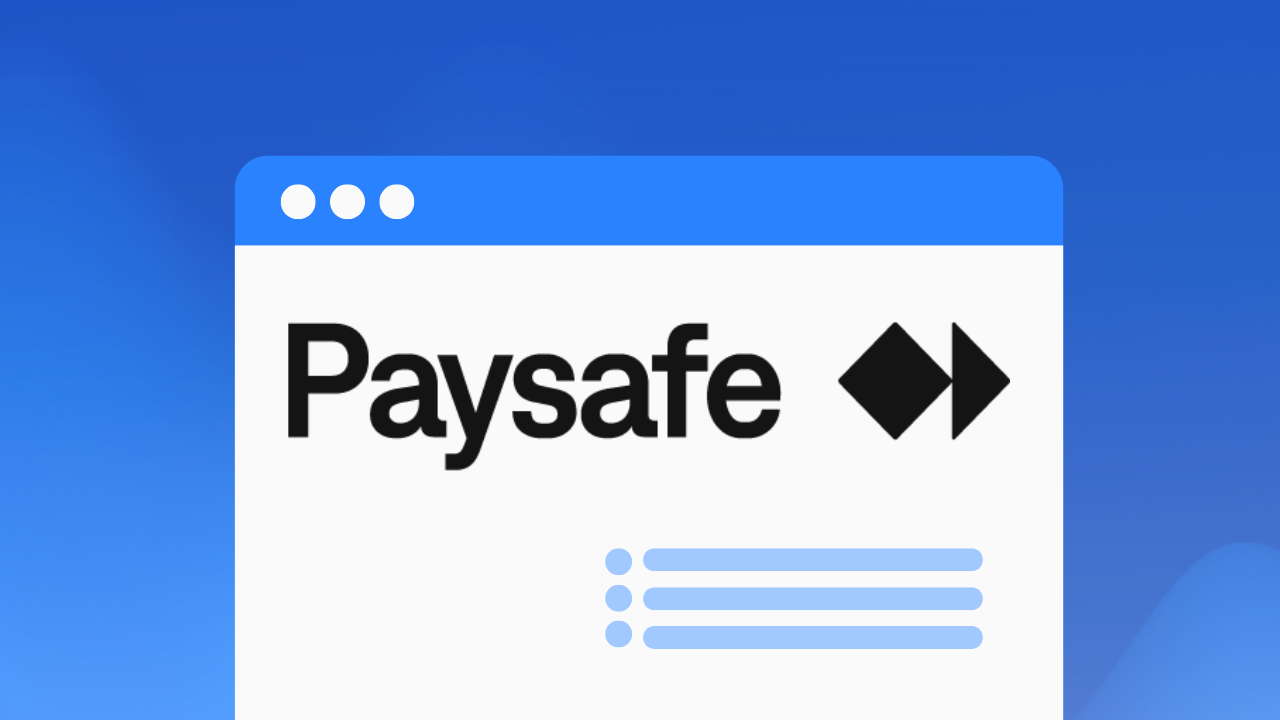
.png)

